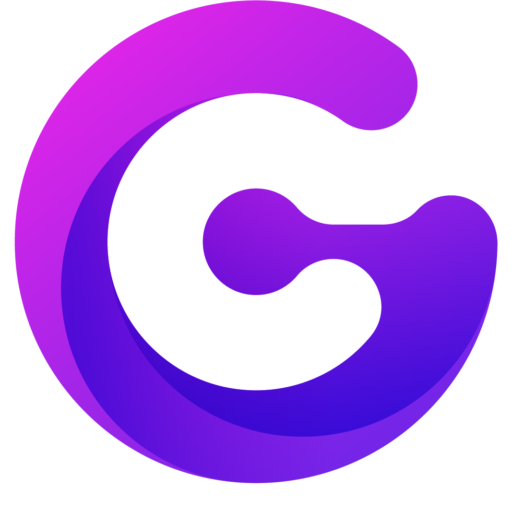For a local business owner—whether you run a brilliant neighbourhood restaurant, a busy hair salon, a dependable trade service, or a boutique retail shop—your digital marketing needs to achieve one immediate goal: getting local people through your door or on the phone. While organic social media builds community, Facebook Ads management local is the engine that generates predictable, scalable results. However, managing Facebook Ads can feel like throwing money into a black box, especially when budgets are tight.
This comprehensive guide is your authoritative, yet approachable, playbook. We will focus entirely on the specific strategies and management techniques that only work for local businesses. You will learn how to transition from hitting the tempting “Boost Post” button to executing surgically precise campaigns in Meta Ads Manager. We will cover budget control, hyper-local targeting, and the essential metrics you must track to ensure your ad spend turns into genuine foot traffic, reliable phone calls, and high-quality local leads. Stop wasting budget on the wrong people and start mastering Facebook Ads management local to dominate your postcode.
Phase 1: The Core Foundation of Local Success
Effective Facebook Ads management for local businesses begins long before you launch your first campaign. It starts with precise setup and data integrity.
1. The Essential Setup: Meta Pixel and Conversions
If you skip this step, you are wasting money. The Meta Pixel (a snippet of code installed on your website) is non-negotiable. It allows Meta (Facebook/Instagram) to track actions users take on your site after they click your ad.
Why the Pixel is Critical for Local Success:
- Conversion Tracking: It tells you exactly which ads resulted in a booking, an enquiry form submission, or a successful lead. You can then stop the underperforming ads.
- Retargeting: It builds a crucial audience of people who visited your site but didn’t convert. Retargeting these users later is the most profitable ad strategy for small budgets.
2. The Power of Custom and Lookalike Audiences
Effective Facebook Ads management local relies on targeting people who resemble your best existing customers, not just generic demographics.
- Custom Audience (The Warm Pool): Upload your email list or customer phone numbers to create a custom audience. These are people who already know you and are the cheapest to convert.
- Lookalike Audience (The Scalable Pool): Create a Lookalike Audience based on your Custom Audience or based on users who converted (e.g., submitted a form or bought a product). Meta’s AI finds thousands of local users who share traits with your best customers. This allows you to scale efficiently.
3. Setting Up the Location Target (Surgical Precision)
Forget broad city targeting. Local ads require surgical precision to prevent waste.
- Radius vs. Postcode: Instead of targeting the whole city, target a 2-5 mile radius around your shop. Alternatively, use a list of specific local postcodes where your ideal customers live or work.
- Exclusion Zones: If there is a major industrial estate or a far-flung, low-value area within your radius, proactively exclude it to keep your spend focused on the right streets.
- “People who live in this location”: Always select this option instead of “People who were recently in this location.” You want residents, not tourists or commuters who are unlikely to convert long-term.
Phase 2: Budgeting and Bidding for the Small Business
The number one fear is budget burnout. Mastering Facebook Ads management local means knowing exactly how much to spend and how to control the auction.
1. The Starter Budget and Daily Limit
For a new local campaign, start small, but spend enough to gather data quickly.
- The Starter Rule: Allocate a minimum of $\textsterling 5$ to $\textsterling 10$ per day, per ad set, for a trial period of 7 to 10 days. This gives the Meta algorithm enough data to learn what works.
- Set Account Limits: Use the Account Spend Limit feature in Meta Ads Manager. This hard cap prevents unexpected overspending and provides peace of mind.
2. The Right Bidding Strategy: Lowest Cost
As a local business, you don’t have the budget to chase competitors with high bids.
- Default to Lowest Cost: Use Meta’s Lowest Cost (Automatic) bidding strategy. The algorithm will aim to get you the most conversions or clicks for the lowest possible cost within your budget.
- Avoid Manual Bidding: Until you are spending $\textsterling 500$+ per day and have a deep understanding of your Cost-Per-Acquisition (CPA), avoid manual or bid cap strategies. They are too complex for a new local campaign.
3. The Power of Day-Parting
Why pay for ads at 3:00 AM if your shop is closed and your target customers are asleep?
- Use Day-Parting: Schedule your ads to run only during business hours or prime time (e.g., 7:00 AM to 9:00 AM for commuters, and 6:00 PM to 9:00 PM when people are scrolling at home). This ensures every click is relevant and saves valuable budget.
Phase 3: High-Impact Campaign Objectives for Local Leads
Local businesses need specific actions: a physical visit, a phone call, or an appointment booking. Choose the objective that aligns with your true business goal.
1. The “Messages” Objective (Service Businesses)
For tradesmen, consultants, or professional services, the goal is often to open a direct conversation.
- Goal: Drive conversations via Facebook Messenger or Instagram Direct Message (DM).
- Strategy: Use an ad that asks a simple question related to the customer’s pain point (e.g., “Need a boiler service before winter? Click here to check availability!”).
- Key Metric: Cost Per Message: This shows how cheaply you can initiate a sales conversation.
2. The “Lead Generation” Objective (Form Submissions)
This objective collects user data (name, email, phone) directly within Facebook, without sending the user to your website.
- Goal: Capture lead details instantly with an Instant Form.
- Benefit: It is incredibly high-converting because the user’s details are often pre-filled by Facebook, reducing friction.
- Critical Step: Ensure your form asks specific qualifying questions (e.g., “What is your postcode?” or “Is your project budget over $\textsterling 500$?”) to filter out low-quality leads.
3. The “Store Traffic” Objective (Retail and Hospitality)
This objective is specifically designed for businesses with a physical location.
- Goal: Encourage users to visit your physical store.
- Requirement: This requires you to set up your business locations in Meta Ads Manager.
- Ad Content: Offer a highly compelling reason to visit, such as a time-sensitive offer (e.g., “Show this ad at the counter for 10% off your first coffee!”).
Phase 4: Creative and Copy that Converts Locally
Your ad creative must immediately resonate with the local customer. They need to know this ad is for them, right now, in their area.
1. Authentic Creative: Ditch the Stock Photos
Local audiences trust authenticity. A polished, generic stock photo can actually reduce trust.
- Use “Behind-the-Scenes” Videos: A short video introducing your staff, showing a tidy workshop, or quickly demonstrating your service. This humanizes your brand.
- Before & After Photos: If you are a physical service (salon, builder, decorator), before-and-after photos of locally completed projects are gold.
2. The Localised Call-to-Action (CTA)
Your ad copy must use language that confirms local relevance.
- Use the Town Name: “The best Thai food in Manchester is now running a delivery special!”
- Highlight Local Credentials: “Trusted by over 500 families in the Bristol area.”
- Specific Offers: Mention local landmarks or events if appropriate.
3. The Testimonial Ad
Use your best 5-star Google or Facebook review as the actual ad copy. Social proof is the strongest sales tool.
- Format: Use a great photo of the result, and in the ad text, quote a happy local customer, finishing with a CTA like, “Click ‘Learn More’ to read why [Customer Name] loves our service.”
To ensure your landing pages load quickly and are perfectly aligned with your ad copy—a major factor in conversion rate optimization (CRO)—a robust technical setup is essential. You can find professional resources and support for optimizing your website’s performance at https://galaxiesoftware.co.uk.
Phase 5: Essential Management and Optimization
Facebook Ads management local success is continuous. You cannot “set it and forget it.” Dedicate 30 minutes every 3-4 days to optimization.
1. The 72-Hour Kill Rule
If an ad set (a specific audience/budget combination) has been running for 72 hours and its Cost Per Lead (CPL) is significantly higher than your target, pause it. Don’t waste budget hoping it will miraculously improve.
2. Split Testing (A/B Testing) Your Creative
Never run just one ad. Always test at least two versions against each other within the same ad set.
- Test One Variable: Only change one thing at a time:
- Test Headline: “Free quote today” vs. “10% off for new customers.”
- Test Image/Video: Photo A vs. Photo B.
- Stop the Loser: After 5–7 days, stop the ad with the higher CPL and put the entire budget onto the winner.
3. Leveraging Automatic Placements
As a small business, let Meta’s AI decide where your ad should run (Facebook Feed, Instagram Stories, Audience Network, etc.).
- Select “Advantage+ Placements” (Automatic): The algorithm is smarter than you and will automatically place your ad where it gets the cheapest conversion, often utilizing less competitive placements like Stories or Reels.
4. Reviewing the Frequency Score
The Frequency metric tells you how many times, on average, a person in your local audience has seen your ad.
- The Danger Zone: If the frequency climbs above 3.0, your audience is getting “ad fatigue.” They are seeing the ad too much, they are annoyed, and they are less likely to click.
- The Fix: When frequency is high, refresh your creative (new video, new image, new headline) or expand your target radius slightly to find a new audience pool.
Conclusion: Turning Ad Spend into Local Growth
Mastering Facebook Ads management local businesses need is less about having a huge budget and more about applying precise, continuous management.
Your immediate action plan should focus on precision:
- Install the Pixel and set up Custom Audiences.
- Target hyper-locally using postcodes or a tight radius, and use the “People who live in this location” setting.
- Choose the “Messages” or “Lead Generation” objective to drive direct, measurable action.
- Ruthlessly test your creative using authentic, locally relevant visuals and a strong, localized Call-to-Action.
By dedicating a small, consistent amount of time to reviewing your CPL and pausing underperforming ad sets, you transform Facebook Ads from a gamble into a predictable, scalable lead generation machine that consistently fuels your local business growth.
What is the biggest friction point in your current customer journey (e.g., slow website, too many form fields) that you need to fix before launching your first ad?

